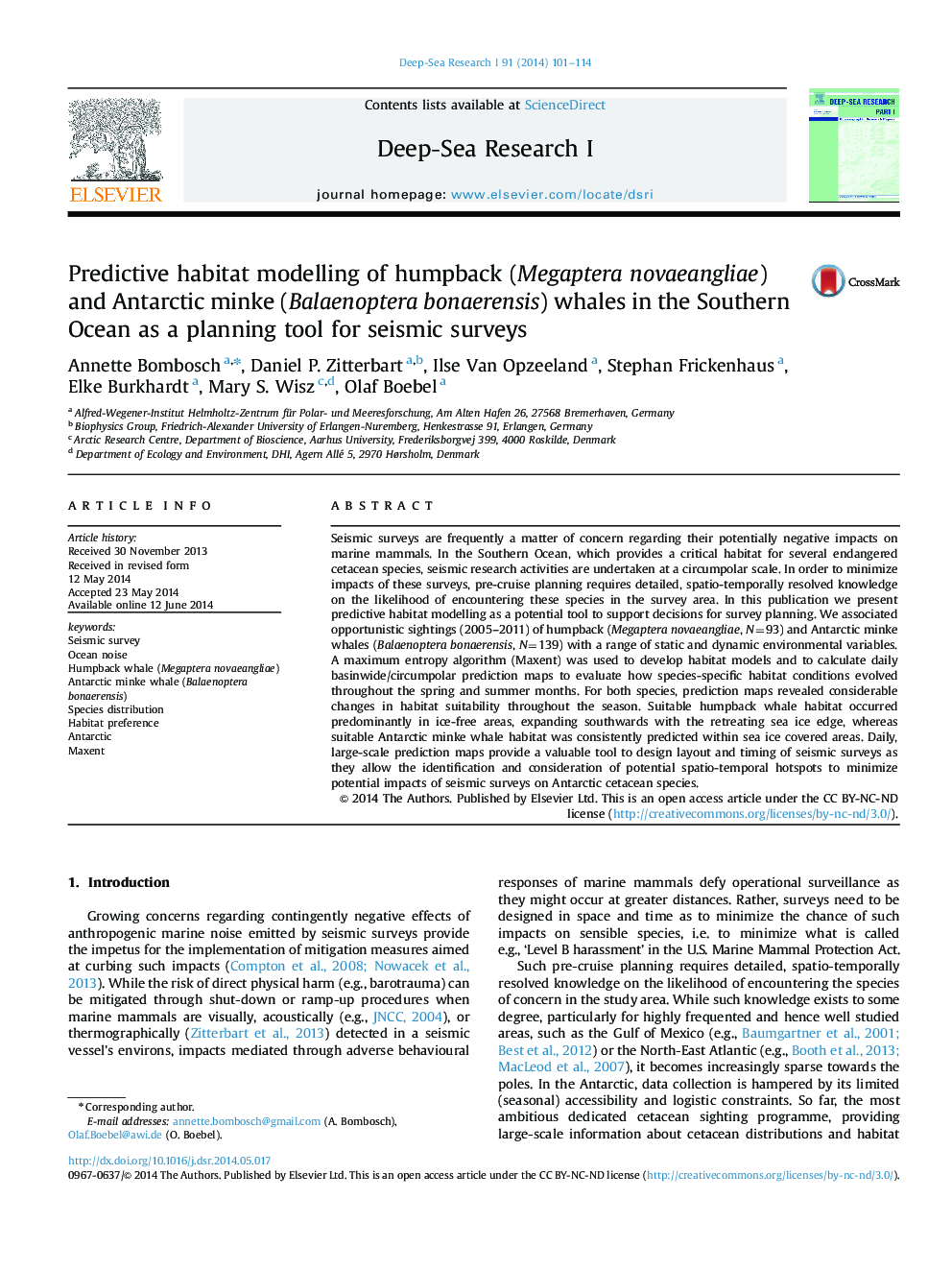| Article ID | Journal | Published Year | Pages | File Type |
|---|---|---|---|---|
| 6383672 | Deep Sea Research Part I: Oceanographic Research Papers | 2014 | 14 Pages |
Abstract
Seismic surveys are frequently a matter of concern regarding their potentially negative impacts on marine mammals. In the Southern Ocean, which provides a critical habitat for several endangered cetacean species, seismic research activities are undertaken at a circumpolar scale. In order to minimize impacts of these surveys, pre-cruise planning requires detailed, spatio-temporally resolved knowledge on the likelihood of encountering these species in the survey area. In this publication we present predictive habitat modelling as a potential tool to support decisions for survey planning. We associated opportunistic sightings (2005-2011) of humpback (Megaptera novaeangliae, N=93) and Antarctic minke whales (Balaenoptera bonaerensis, N=139) with a range of static and dynamic environmental variables. A maximum entropy algorithm (Maxent) was used to develop habitat models and to calculate daily basinwide/circumpolar prediction maps to evaluate how species-specific habitat conditions evolved throughout the spring and summer months. For both species, prediction maps revealed considerable changes in habitat suitability throughout the season. Suitable humpback whale habitat occurred predominantly in ice-free areas, expanding southwards with the retreating sea ice edge, whereas suitable Antarctic minke whale habitat was consistently predicted within sea ice covered areas. Daily, large-scale prediction maps provide a valuable tool to design layout and timing of seismic surveys as they allow the identification and consideration of potential spatio-temporal hotspots to minimize potential impacts of seismic surveys on Antarctic cetacean species.
Related Topics
Physical Sciences and Engineering
Earth and Planetary Sciences
Geology
Authors
Annette Bombosch, Daniel P. Zitterbart, Ilse Van Opzeeland, Stephan Frickenhaus, Elke Burkhardt, Mary S. Wisz, Olaf Boebel,
